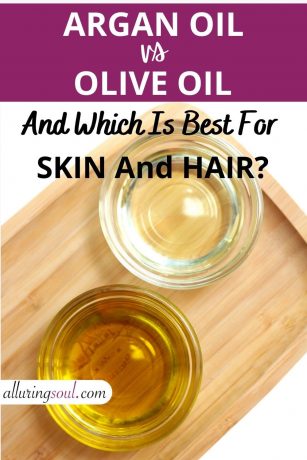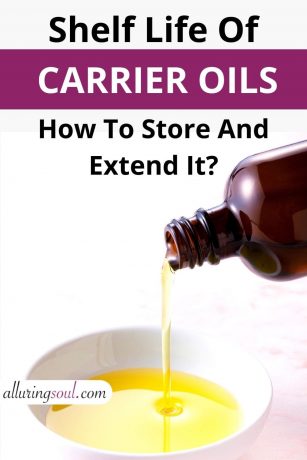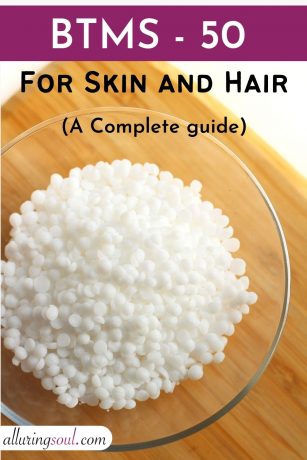Due to the smaller molecular weight of hydrolyzed silk protein, it is more penetrating and moisturizing to skin and hair. It helps to improve hair elasticity, prevents breakage and split ends, smoothes frizziness along with other damages caused by sun exposure and chemical treatments.
Besides, it increases hair elasticity and improves moisture retention to give you soft, bouncy, and shiny hair. In a nutshell, it is most suitable for dry, damaged, and curly hair.
What Is Hydrolyzed Silk Protein?
The silk protein is made from the natural silk fibers of silkworm cocoons but it becomes hydrolyzed silk protein when it goes through a chemical process called molecular hydrolysis.
Hydrolyzed silk protein is fundamentally a large protein molecule undergone a chemical process where it is split into smaller fragments to make it water-soluble. Usually, silk is non-soluble, but after the protein gets processed, it becomes water-soluble.
This protein is transparent amber in color and has a faint fragrance.
What Are The Types Of Hydrolized Silk Protein?
There are three types of hydrolyzed silk protein. They have different molecular sizes and have different absorption levels but they are all water-soluble and can be used interchangeably.
- Hydrolyzed Silk Protein Powder – It has the largest molecular size than silk peptides and amino acids. It is more difficult to get absorbed than silk peptides and amino acids.
- Hydrolyzed Silk Peptides – It has a lower molecular size than silk protein powder but larger than silk amino acids. Also, it gets more easily absorbed than silk protein powder.
- Hydrolyzed Silk Amino acids – It has a very lower molecular size than silk protein powder and silk peptides. Also, it gets more easily absorbed by the hair than silk protein powder and silk peptides.
Benefits Of Hydrolyzed Silk Protein For Hair
1. Strengthen Hair – When hair lacks keratin, it gives rise to weaken strands, making it more prone to breakage. However, hydrolyzed silk protein has the ability to produce new keratin, which in return strengthens and fortifies the hair strands from within. It can do so because it contains cysteine, one of the amino acids required to make keratin.
2. Prevents Hair Damage – Hydrolyzed silk protein penetrates deep inside the hair shaft, where it works its way to lock moisture and improve hair elasticity. This action makes the strands more resistant to breakage and prevents damages such as split ends and frizz.
3. Soften hair strands – The hydrolyzed silk protein has water-attracting properties and the ability to increase moisture retention on hair. This feature improves the texture and adds softness to dry, damaged hair, making it look silky and bouncy.
4. Suitable for colored hair – Hydrolyzed silk protein creates a protective layer on top of the hair surface that protects and blocks the harmful UV rays. This helps to prevent color fading caused by prolonged sun exposure and instead makes the hair color look vibrant for a longer time. According to a study, hydrolyzed silk protein helps to decrease the damage caused by the coloring process.
5. Tames flyaway – Low porosity hair is more prone to frizz and friction, making the strands difficult to manage and style. But the amino acids present in the hydrolyzed silk protein have the ability to smooth down frizz and tame the unmanageable flyaways.
Is Hydrolyzed Silk Protein Vegan?
Hydrolyzed silk protein is not vegan as it is derived from the natural silk fibers of silkworm cocoons.
What Is The Substitute For Hydrolyzed Silk Protein?
One can use another hydrolyzed protein in place of hydrolyzed silk protein such as hydrolyzed oat protein, hydrolyzed rice protein, hydrolyzed quinoa protein, hydrolyzed wheat protein, or hydrolyzed baobab protein.
How To Use Hydrolyzed Silk Protein For Hair?
You can either use store-bought hydrolyzed silk protein-infused hair care products or DIY it by adding the silk protein in your preferred hair product at a specific concentration.
Make Your Own DIY Leave-in Hair Condition With Hydrolyzed Silk Protein.
Does Hydrolyzed Silk Protein Repair Damaged Hair?
Dry and damaged hair benefits the most with the use of hydrolyzed silk protein, as it has the ability to repair and restore the lost moisture from the hairs and make them soft and silky.
Is Hydrolyzed Silk Protein Safe To Use?
Yes, hydrolyzed silk protein is safe to use in hair care products when used in a specific amount.
How Often Should I Use Hydrolyzed Silk Protein For Hair?
Hydrolyzed silk protein is an effective but powerful ingredient. If used more than necessary it can weigh down the hair and make it look greasy. It’s best to apply hydrolyzed silk protein once every 4 weeks. But it all depends on the type of hair you have, as damaged and high porosity hair will require this treatment more often than low porosity and fine hair.
Is Hydrolyzed Silk Protein Good For Low Porosity Hair?
Low porosity hair contains more hair protein than high porosity hair; thus, hydrolyzed silk protein shouldn’t be used in this type of hair more frequently as it can make the hair limp and greasy.







No Comments